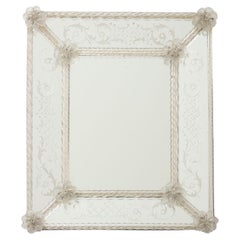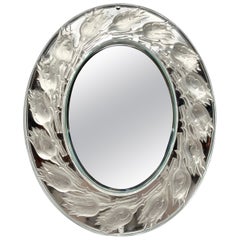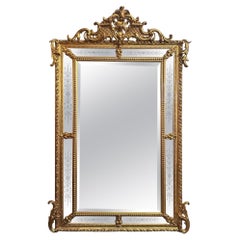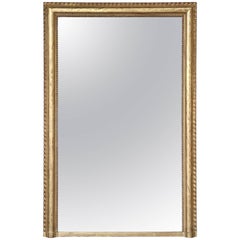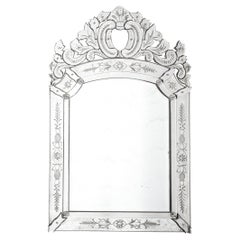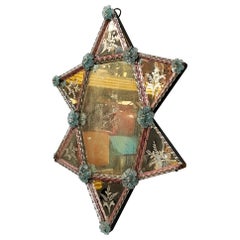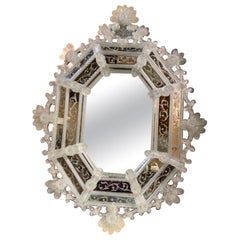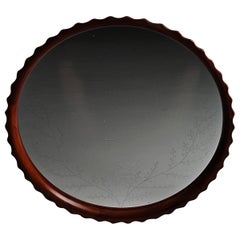Mirror With Etching
Late 20th Century Italian Hollywood Regency Wall Mirrors
Mirror
Early 20th Century French Art Deco Table Mirrors
Glass, Mirror
Vintage 1950s Italian Mid-Century Modern Wall Mirrors
Brass
Antique Late 19th Century French Wall Mirrors
Mirror, Giltwood
Antique 19th Century French Mantel Mirrors and Fireplace Mirrors
Mercury Glass, Giltwood
Vintage 1950s French Mid-Century Modern Wall Mirrors
Mirror
Vintage 1980s Italian Wall Mirrors
Glass, Mirror
Early 20th Century Italian Wall Mirrors
Mirror
Mid-20th Century Swedish Scandinavian Modern Wall Mirrors
Mirror, Beech
20th Century Hollywood Regency Table Mirrors
Brass
Mid-20th Century Italian Wall Mirrors
Mercury Glass, Mirror
Mid-20th Century Italian Wall Mirrors
Mercury Glass, Mirror
Antique Late 18th Century Italian Girandoles
Giltwood, Mirror
Early 20th Century French Wall Mirrors
Mirror
Mid-20th Century Italian Wall Mirrors
Mercury Glass, Mirror
Vintage 1950s French Mid-Century Modern Wall Mirrors
Glass, Mirror
Mid-20th Century Italian Rococo Wall Mirrors
Giltwood
Early 20th Century Italian Art Nouveau Wall Mirrors
Brass
Vintage 1940s American Hollywood Regency Wall Mirrors
Mirror
20th Century American Art Deco Wall Mirrors
Mirror, Wood
Antique Late 19th Century French Louis Philippe Wall Mirrors
Giltwood
Antique 19th Century Belle Époque Wall Mirrors
Mirror, Giltwood
Antique 19th Century French Louis Philippe Wall Mirrors
Giltwood
Vintage 1930s European Art Deco Wall Mirrors
Mirror
Early 20th Century Louis Philippe Wall Mirrors
Silver Leaf
Antique 1820s French Louis Philippe Wall Mirrors
Gesso, Mirror, Giltwood
Mid-20th Century Italian Hollywood Regency Table Mirrors
Glass, Art Glass, Wood
Vintage 1930s European Art Deco Wall Mirrors
Glass
Vintage 1930s English Art Deco Wall Mirrors
Glass
Vintage 1940s French Floor Mirrors and Full-Length Mirrors
Mirror, Wood
Vintage 1950s Italian Mantel Mirrors and Fireplace Mirrors
Brass
Antique 19th Century Italian Wall Lights and Sconces
Glass
Mid-20th Century Italian Mid-Century Modern Centerpieces
Mirror, Walnut
Vintage 1940s Italian Wall Mirrors
Mirror
Vintage 1940s Italian Wall Mirrors
Mirror
Vintage 1950s American Wall Mirrors
Antique 18th Century and Earlier Italian Wall Mirrors
21st Century and Contemporary Great Britain (UK) Wall Mirrors
Vintage 1930s French Clocks
Antique 19th Century French Wall Mirrors
Mirror, Wood
Antique Late 19th Century French Wall Mirrors
Gold Leaf
Vintage 1930s Italian Wall Mirrors
Vintage 1960s Italian Mid-Century Modern Wall Mirrors
Glass
Vintage 1940s French More Mirrors
Mirror, Wood
Vintage 1940s Italian Wall Mirrors
Mirror, Wood
Vintage 1940s Italian Wall Mirrors
Glass, Wood
Antique Mid-19th Century French Louis Philippe Wall Mirrors
Silver Leaf
Antique 19th Century French Louis Philippe Wall Mirrors
Silver Leaf
Vintage 1930s French Art Deco More Mirrors
Glass
Antique Early 18th Century Italian Wall Mirrors
Mirror
Vintage 1940s Italian More Mirrors
Glass
Mid-20th Century Wall Mirrors
Mirror
Mid-20th Century Italian Table Mirrors
Mirror, Murano Glass
Mid-20th Century Italian Table Mirrors
Mirror, Murano Glass
Antique 19th Century European Wall Mirrors
Mirror
Mid-20th Century Italian Wall Mirrors
Mercury Glass, Mirror
20th Century American Wall Mirrors
Early 20th Century Italian Wall Mirrors
Glass, Mirror
Early 20th Century Italian Wall Mirrors
Glass, Mirror
Early 20th Century Italian Wall Mirrors
Glass, Mirror
- 1
Mirror With Etching For Sale on 1stDibs
How Much is a Mirror With Etching?
- Can I etch the back of a mirror?1 Answer1stDibs ExpertApril 5, 2022Yes, you can etch on the back of a mirror. Modern mirrors typically have a reflective layer that is deposited on the back of the glass. If you want to etch the back of a mirror you need to remove the reflective layer, which can be done with an engraving tool or with an etching solution. Shop a range of antique and modern mirrors on 1stDibs.
- What is etching?1 Answer1stDibs ExpertSeptember 25, 2019
Etching is a method of making prints using metal plates onto which a design has been incised by acid.
- What is a Picasso etching?1 Answer1stDibs ExpertApril 5, 2022An etching is created by cutting down a metal plate with chemicals, including acid, to achieve the desired image. The metal plate is then inked and pressed onto a piece of paper. Picasso became fascinated with etchings when he moved to Paris in the early 1900s, and would go on to pioneer new techniques with etchings throughout his career. Shop a selection of Pablo Picasso pieces from some of the world’s top art dealers on 1stDibs.
- What are the types of etching?1 Answer1stDibs ExpertSeptember 25, 2019
There is dry and wet etching.
- How do you identify an etching?1 Answer1stDibs ExpertNovember 26, 2024To identify an etching, look in the corners and on the back for an artist's signature or publisher information. Cross-referencing markings with information shared on trusted online resources can allow you to determine the artist. From there, you can browse online and print catalogues of their work to find out the title and date of the etching. In terms of how to tell an etching apart from other types of prints, one telltale sign is the appearance of slightly blurry lines along the edges. Called plate marks, these lines form from the pressure exerted by the plate during the etching process. You may need a magnifying glass to spot the plate mark on a print. If you have any difficulty with the identification process, consider enlisting the help of a certified appraiser or experienced art dealer. Shop a collection of etchings on 1stDibs.
- What is etched glass?1 Answer1stDibs ExpertFebruary 22, 2021Etched glass is a type of decorative glass which is the result of small cuts made to the glass. The cuts, which appear white, typically form patterns or images.
- What is vintage etching?1 Answer1stDibs ExpertApril 5, 2022Vintage etching is a term that refers to a specific type of print produced between 50 and 100 years ago. Printmakers produced etchings by carving images into a copper plate and then soaking it in an acid bath. Then, they applied ink to the plate and pressed it against paper or another material to create an image. On 1stDibs, find a collection of vintage etchings.
- What is an original etching?1 Answer1stDibs ExpertMarch 13, 2024An original etching is a print produced during the first production run of a print series. After making an etching plate, an artist will create a limited number of etchings. Collectively, these prints are the original etchings. They differ from restrike etchings made years later, sometimes after the death of the artist. On 1stDibs, shop a diverse assortment of etchings.
- 1stDibs ExpertOctober 15, 2024To tell if an etching is valuable, one approach is to conduct research using trusted online resources. The maker, age, image quality, historical significance and overall condition all play a role in determining the potential value of an etching. By seeing how much similar etchings have sold for in the past, you can get a rough idea of how much your piece may be worth. However, experts generally recommend having a certified appraiser or experienced art dealer evaluate prints for a more accurate valuation. Find a wide range of etchings on 1stDibs.
- Did Picasso make etchings?1 Answer1stDibs ExpertApril 5, 2022Yes, Pablo Picasso made etchings and took that foundation into an exploration of printmaking and the different methods of that medium. Picasso first began working on etchings in the early 1900s, quickly mastering the technique, and then he began expanding and pushing the boundaries to create a unique and signature style. On 1stDibs, find a variety of original artwork from top artists.
- 1stDibs ExpertAugust 26, 2024The difference between an etching and a print depends on how specific the terms are. Print is a general term for any type of artwork made by transferring an image onto another material, such as paper or fabric. A specific printmaking technique, etching is a way of incising lines in a metal plate by first drawing on an acid-resistant coating, or ground, to reveal the metal beneath. The plate is then submerged in acid, which “bites” the lines into the metal plate. On 1stDibs, find a large selection of etchings and other prints.
- 1stDibs ExpertOctober 24, 2024To tell a lithograph from an etching, look closely along the edges of the print. Etching is a way of incising lines on a metal plate by first drawing on an acid-resistant coating, or ground, to reveal the metal beneath. Lithography uses a stone rather than a plate. As a result, etchings will usually have a faint imprint or indentation called a plate mark, while a lithograph will not. Researching the artist using trusted online resources may also be helpful, as some printmakers worked exclusively with etchings or lithographs. Find a large selection of lithographs and etchings on 1stDibs.
- 1stDibs ExpertApril 3, 2024The difference between a lithograph and an etching is that while both are types of prints, they are made using different techniques. With respect to lithography, the image to be printed is drawn or painted on a stone or metal plate with an oil-based substance, such as a greasy crayon or tusche (an oily wash). The stone is then covered with water, which is repelled by the oily areas. Oil-based ink is then applied to the wet stone, adhering only to the oily image. Afterward, the stone is covered with a sheet of paper and run through a press.
Etching is a way of incising lines in a metal plate by first drawing on an acid-resistant coating, or ground, to reveal the metal beneath. The plate is then submerged in acid, which “bites” the lines into the metal plate. The ground is then removed and the plate is inked for pressing.
Find a collection of lithographs for sale on 1stDibs. - 1stDibs ExpertAugust 26, 2024The difference between etching and aquatint is technique. Invented in the 1500s, etching is a way of incising lines in a metal plate by first drawing on an acid-resistant coating, or ground, to reveal the metal beneath. The plate is then submerged in acid, which “bites” the lines into the metal plate. The ground is then removed, and the plate is inked for pressing. Etched lines tend to reveal the movement of the artist’s hand more than a technique like engraving, since the image is created on softer ground. Aquatint, a technique named for its resemblance to watercolor or ink wash, is often combined with etching to create rich tonal variations. It’s a similar process to etching, but the resin ground is more granulated, so the acid handles the metal differently. Different degrees of darkness are created based on the amount of time the plate is in contact with the acid. Find a collection of etchings and aquatint prints on 1stDibs.
- 1stDibs ExpertAugust 29, 2024To tell if an etching is original, first gently run your hand along its surface. An original etching will usually have a slight indentation in the image area left behind by the pressure applied by the plate during the printing process. Next, grab a magnifying glass and view the image up close. On an original, you won't see small dots making up the picture, but many reproductions do display dots due to their printing methods. Finally, look at the signature. Most original etchings will be hand-signed. If the signature is printed on your piece, it may be a reproduction. Consult a certified appraiser or experienced art dealer for an expert opinion on your print. Find a wide variety of etchings on 1stDibs.
- 1stDibs ExpertMarch 22, 2022Rembrandt's etchings are important because of the influence they had on printmaking. The printing techniques that he employed allowed each of his prints to seem very unique while making it possible for him to mass produce his images. Printmakers that followed utilized the advancements he made in the field to create and distribute their own prints. Find a range of Rembrandt art on 1stDibs.
- 1stDibs ExpertOctober 30, 2024Yes, some original etchings are worth something. Original signed prints by Old Masters like Rembrandt and Albrecht Dürer are particularly valuable, as are those made by modern artists such as Paul Klee, Henri Matisse, Martin Lewis and David Hockney. Generally, the artist, age, historical significance, image quality and overall conditions of etchings all contribute to their value. To learn how much your etching may be worth, seek the opinion of a certified appraiser or experienced art dealer. Explore a large collection of etchings on 1stDibs.
- What is Eglomise mirror?1 Answer1stDibs ExpertFebruary 22, 2021An Eglomise mirror is a mirror created using the historical technique of painting glass with gold and silver leaf. This technique is typically used to create decorative glass and wall mirrors.
- What is a trumeau mirror?1 Answer
- What is a Venetian mirror?1 Answer1stDibs ExpertOctober 21, 2020
While polished metal mirrors have existed since ancient times, glass Venetian mirrors are thought to have first been produced on the Venetian island of Murano, in Italy, beginning in the 1500s (some research points to 1300 for Venetian mirrors). Set in ornate frames frequently bedecked with gold highlights or floral leaf designs, Venetian glass mirrors were handmade by artisans using refined, expert techniques for royalty and for members of the upper class. By the 17th century, Venetian mirrors were in high demand. Because antique Venetian glass mirrors are still very popular today, there are many knockoffs on the market. Today’s authentic Venetian mirrors are still produced only on the island of Murano.
